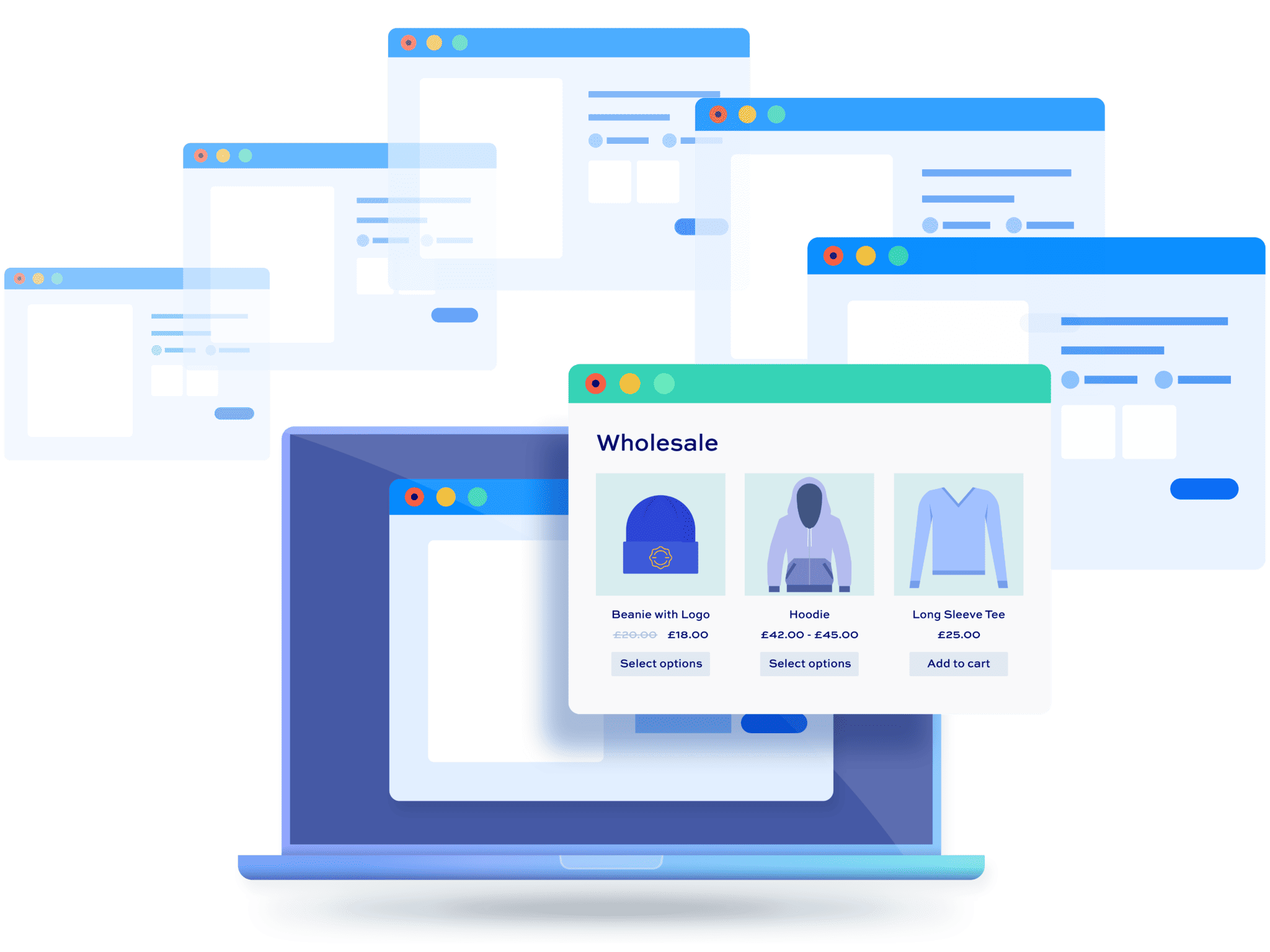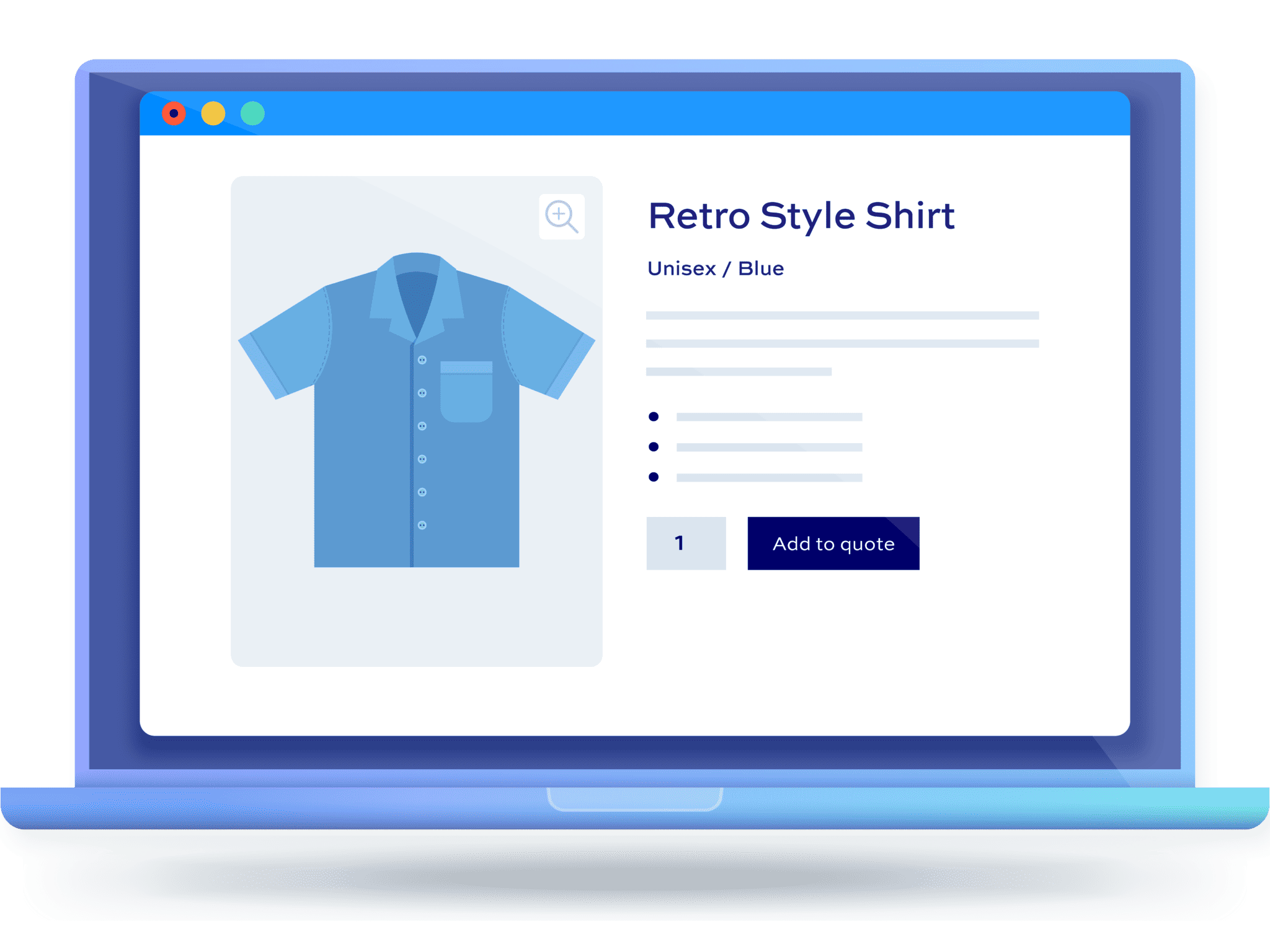How to use WooCommerce in product catalog mode [+ video]
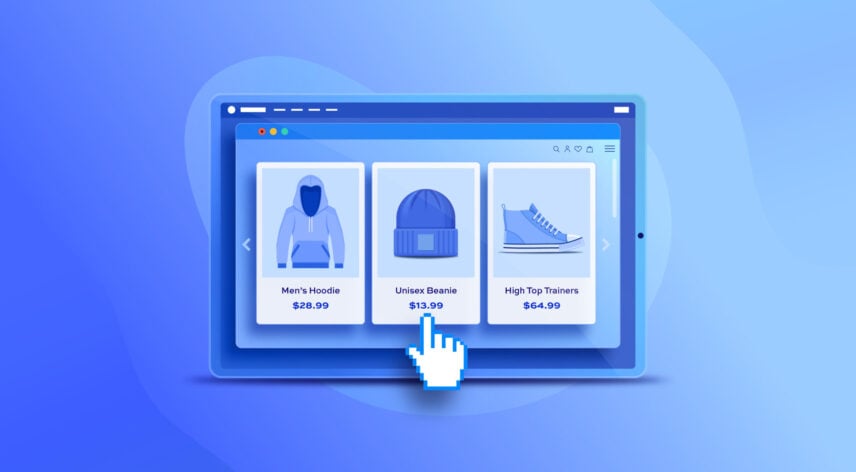
Although WooCommerce is usually associated with building online stores – including carts, checkout pages, and payment gateways – it can also be configured to function as a product catalog.
This is perfect if you don’t want to process direct sales online. Some businesses, maybe for logistical reasons, product types, or customer engagement strategies, simply want to showcase products without allowing customers to make a purchase online. For these cases, using your WooCommerce website as a product catalog offers the ideal balance of functionality and flexibility.
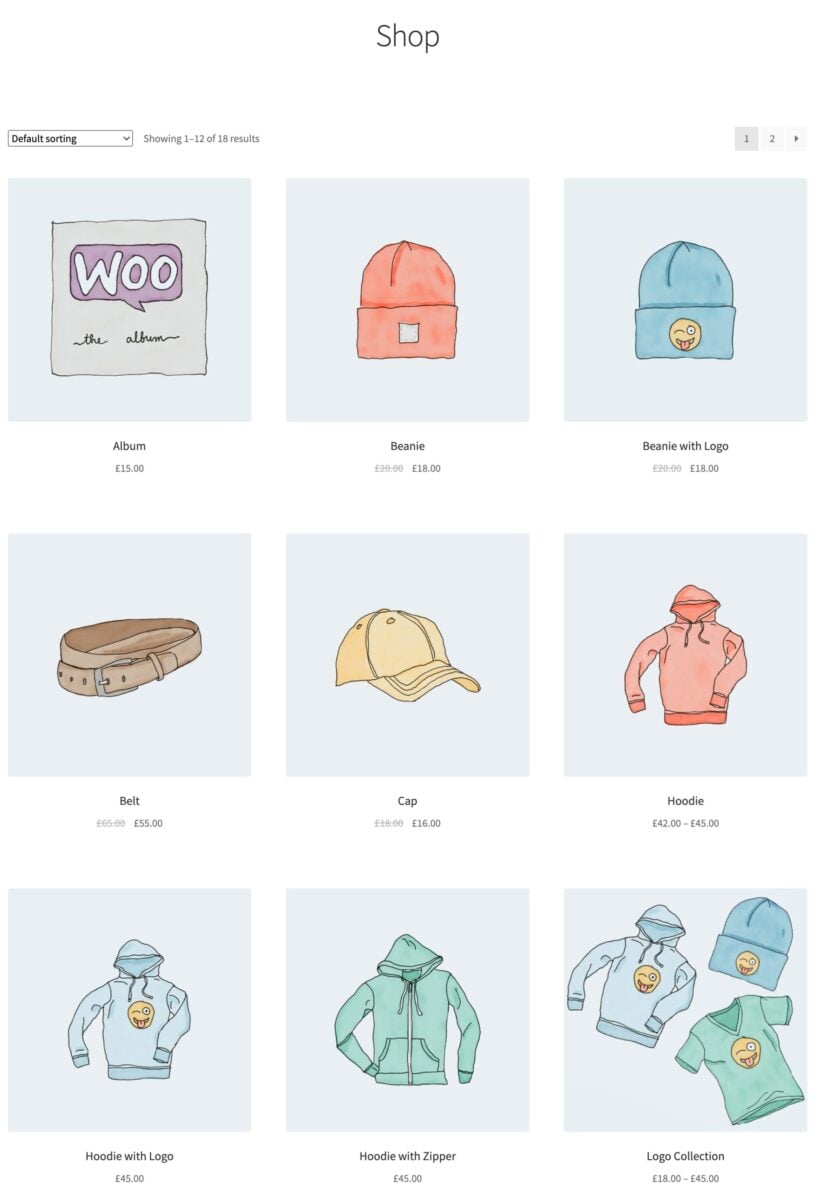
In this article we’ll look at:
- What catalog mode means in WooCommerce and its main benefits
- How to enable catalog mode in WooCommerce
- Catalog mode for certain user roles
- Catalog mode for specific product categories
- Using catalog mode in your wholesale or B2B store
- How to allow users to request a quote from your catalog
Whether you’re launching a new B2B platform, offering high-value or custom products, or simply want to present a range of goods for enquiry rather than purchase, WooCommerce catalog mode could be the right tool for the job.
Catalog mode turns your WooCommerce site into an interactive product brochure. It gives you all the visual, organizational, and SEO benefits of WooCommerce – without requiring you to set up more complicated stuff like payment processing, tax settings or shipping options.
But first, let’s check what we mean by catalog mode.
What is WooCommerce catalog mode?
Catalog mode refers to a configuration of WooCommerce where the standard ecommerce functionalities – such as the add to cart button, shopping cart, and checkout process – are removed or disabled. Instead, the site focuses entirely on showcasing products, much like a printed catalog would.
In this mode, customers can browse items, view images and descriptions, compare specifications (and prices, if you wish), and get a comprehensive understanding of what’s available – but they can’t make purchases directly through the site.
How to enable catalog mode in WooCommerce
Catalog mode is not a standard feature within WooCommerce, so you’ll need an extra plugin. The WooCommerce Members Only plugin allows you to enable catalog mode easily and gives you control over what elements you choose to hide or show. For example, you might hide prices and checkout options for guest users but display them for logged-in wholesale customers
We’ll look at a number of different options you can set using this plugin. First, though, let’s take a look at some common use-cases for enabling catalog mode in WooCommerce.
Why use catalog mode in your store?
There are many valid business cases for choosing catalog mode instead of a traditional ecommerce store. For some companies, it’s a strategic decision aligned with their sales process or industry norms. For others, it’s about easing into online selling or complying with legal or logistical constraints. Below are some of the most common reasons to consider using WooCommerce catalog mode.
1. B2B and wholesale businesses
Business-to-business transactions often require personalised pricing, negotiated deals, and bulk ordering that can’t be handled well with a typical online store setup. In these situations, displaying a product catalog without enabling purchases allows companies to encourage enquiries while still showcasing their product range.
Many B2B stores also require customers to register before seeing prices, and catalog mode can help enforce that restriction while still giving prospects a clear overview of the inventory.
We’ll look specifically at catalog mode in B2B and wholesale stores later in this article.
2. Products that require a quote
Some products – especially those that are custom-made, configurable, or high-value – aren’t suited to a simple “add to cart” system. Think of items like industrial machinery, bespoke furniture, architectural fittings, or corporate services.
These often require a consultation, quotation, or site visit before a sale can be completed. In this case, a product catalog can display features, specifications, and use cases, while encouraging customers to get in touch through a contact form or quotation request system.

We’ll also look at stores that allow users to request a quote from the catalog later in the article.
3. Businesses not ready to sell online yet
If you’re just starting out or transitioning from offline to online operations, a product catalog is a great first step. It allows you to build brand awareness, promote your products, and appear in search results, all without the complexity of setting up payment gateways or dealing with order fulfilment.
This approach lets you focus on content, design, and customer experience while developing your logistics and sales strategy in the background.
4. Regional or legal restrictions
In some countries or regions, online selling might be restricted due to regulations, tax laws, or market conditions. Similarly, some businesses may sell items that cannot be transacted online – such as pharmaceuticals, firearms, or regulated goods. For these businesses, a WooCommerce-powered catalog provides the benefit of a digital presence without crossing into restricted territory.
5. Out-of-stock or discontinued items
If your store frequently deals with fluctuating stock levels or seasonal inventory, catalog mode can be used to present out-of-stock or discontinued items without offering them for purchase. This is particularly useful for keeping product pages live for SEO purposes or historical reference, while clearly communicating that the item is not currently available.
6. Encouraging enquiries and lead generation
Sometimes the goal of an online product catalog isn’t to sell directly, but to initiate conversations. By removing direct purchase options and replacing them with enquiry forms, call-to-action buttons, or contact details, you shift the user experience from shopping to engaging.
This strategy is especially effective in industries where sales are driven by relationships and trust, such as luxury goods, consulting services, or B2B equipment sales.
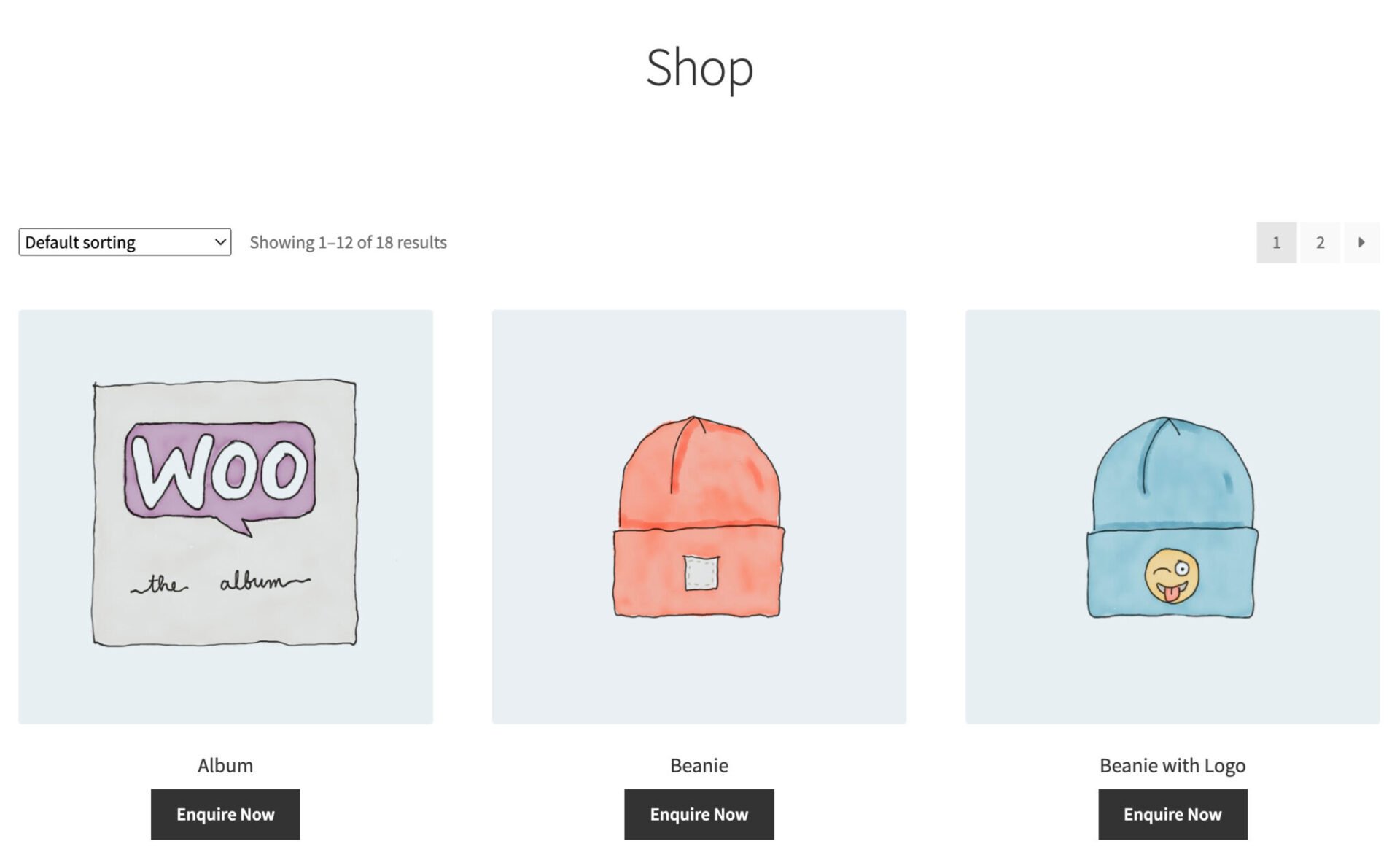
We’ll look at how to redirect the user from your catalog to an enquiry form by replacing the ‘add to cart’ button later in the article.
7. Better control over price visibility
Some stores prefer not to show prices publicly. Whether it’s due to competitive concerns, frequently changing prices, or the need to offer individual quotes, catalog mode allows you to hide prices altogether or display them only to registered users. This creates an air of exclusivity and can also drive more customer sign-ups.
There’s a complete tutorial on how to hide the product price in WooCommerce.
8. Enhanced user experience without purchase pressure
In certain cases, you may want users to explore your catalog in a pressure-free environment. This is particularly relevant for educational, technical, or high-involvement products, where users benefit from spending time researching before making a decision. A WooCommerce catalog provides the structure and polish of an ecommerce site, minus the hard sell.
Enable catalog mode in WooCommerce – tutorial and video
In this section, we’ll walk through how to set up WooCommerce in catalog mode. We’ll use the WooCommerce Members Only plugin initially – then look at some alternatives later.
Members Only is a complete membership solution for WooCommerce which allows you to control what content you show to different users. This includes:
- Decide how to define what users can see your content, e.g. logged-in users, certain user roles, users with passwords, specific user IDs or email addresses
- Show or hide products and product categories from users
- Show or hide other content types from users
- Show or hide elements of product pages, like the price or ‘add to cart’ button
Advantages of using Members Only
It’s ideal for using as a catalog mode plugin because you can:
- Enable catalog mode for some or all users
- Choose whether to hide the price as well
- Optionally redirect users to an enquiry form
- Allow users to access product pages or just list products in archive pages
Let’s look at how to use Members Only to enable catalog mode.
Install and activate the plugin
The first step is to install the plugin on your WooCommerce site. Once you’ve purchased a copy of Members Only:
- Download the zip file by clicking on the link in the welcome email
- Go to Plugins > Add New in your WordPress dashboard
- Click on the ‘Upload Plugin’ button
- Drag and drop the downloaded zip file into the ‘Choose File’ area and click ‘Install Now’.
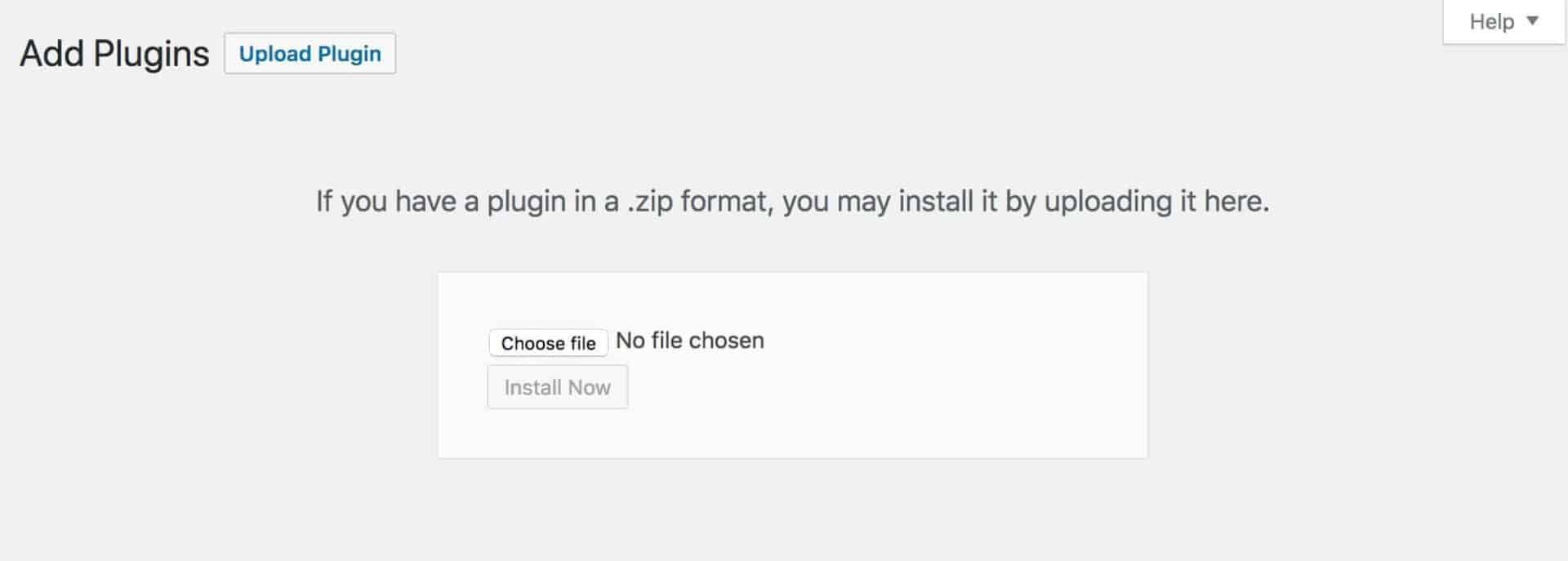
When the file has finished uploading, click the ‘Activate’ button.
Now let’s look at some options for configuring catalog mode.
Method #1: Enable catalog mode in WooCommerce
The basic version of catalog mode in WooCommerce involves the following:
- Remove the ‘add to cart’ button from product pages and archives
- Prevent access to functional pages like the cart, checkout and account pages (or remove them altogether)
To enable catalog mode in WooCommerce for all users with the Members Only plugin:
- Go to Members Only > Settings and choose ‘User role’ in the ‘Restriction Method’ setting

- Enable the ‘Access Product Pages’ option

- Enable the ‘Automatically exclude pages’ option

- Save the settings
These are the basic settings for catalog mode. Now you can specify exactly how the catalog mode will be applied.
- Go to Members Only > Plans > Add New
- Enable ‘Activate Plan’
- In ‘Restricted Content’, choose ‘Specific content’
- In ‘Content Type’, choose ‘Pages’ and ‘Post Types’
- Choose ‘Cart’, ‘Checkout’ and ‘My account’ in ‘Restricted Pages’
- Choose ‘Products’ in ‘Restricted Post Types’
- Publish the plan
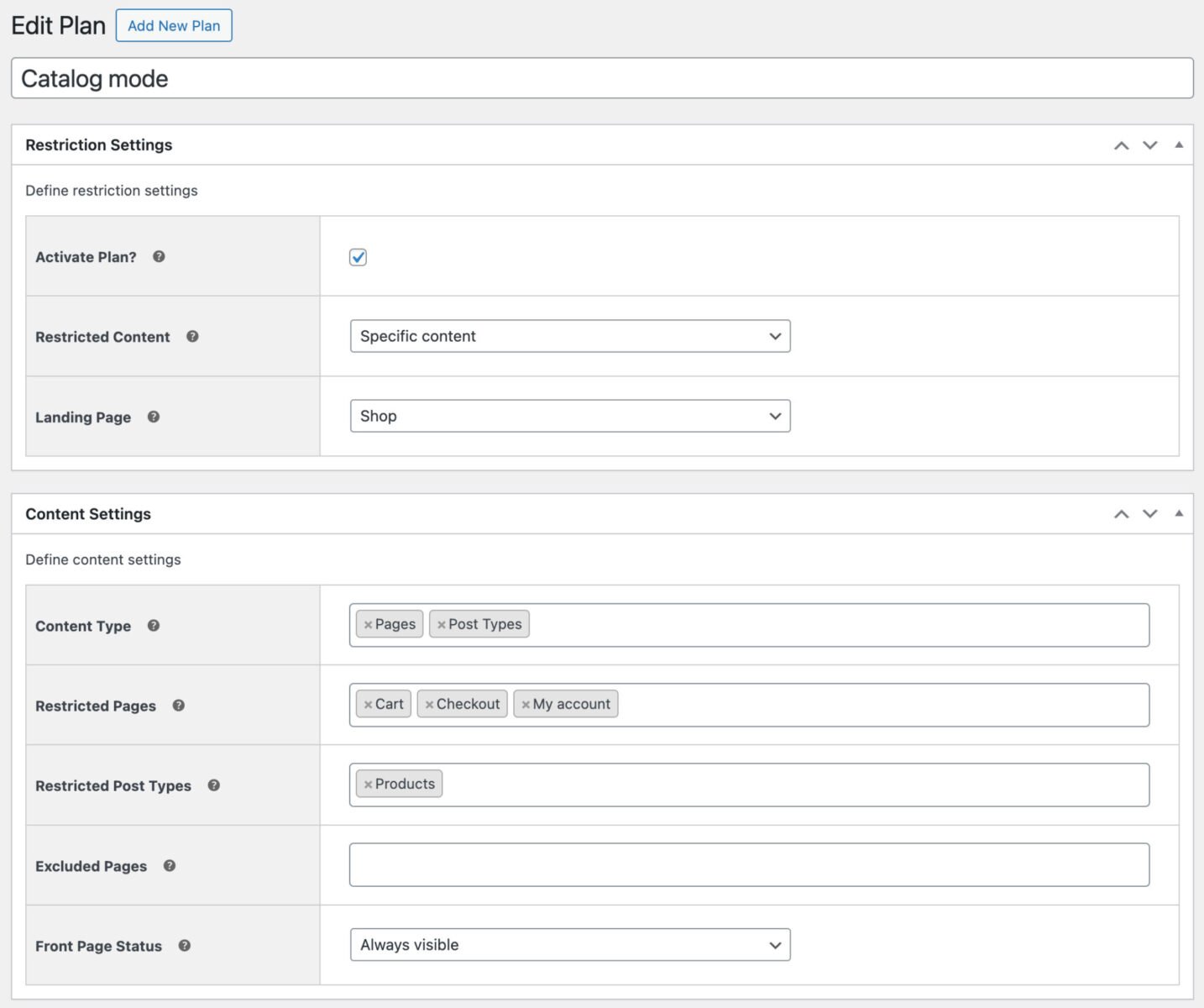
Now, all the products in your store will be displayed without an ‘add to cart’ button. Any menu items to WooCommerce pages, like the cart or checkout, will be automatically removed.
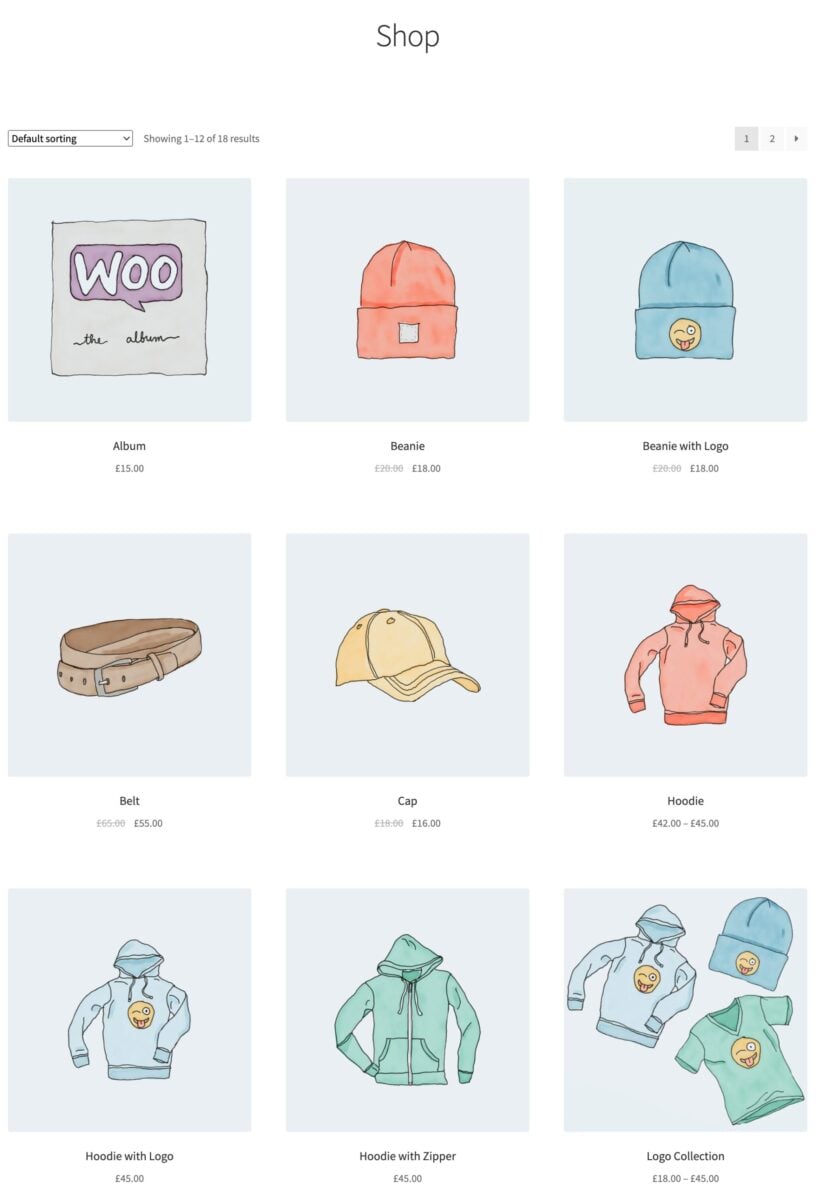
Catalog mode without product prices
If you’d like to remove prices from your catalog:
- Go to Members Only > Settings
- Enable the ‘Hide Price’ option

Now product prices will be hidden in catalog mode.
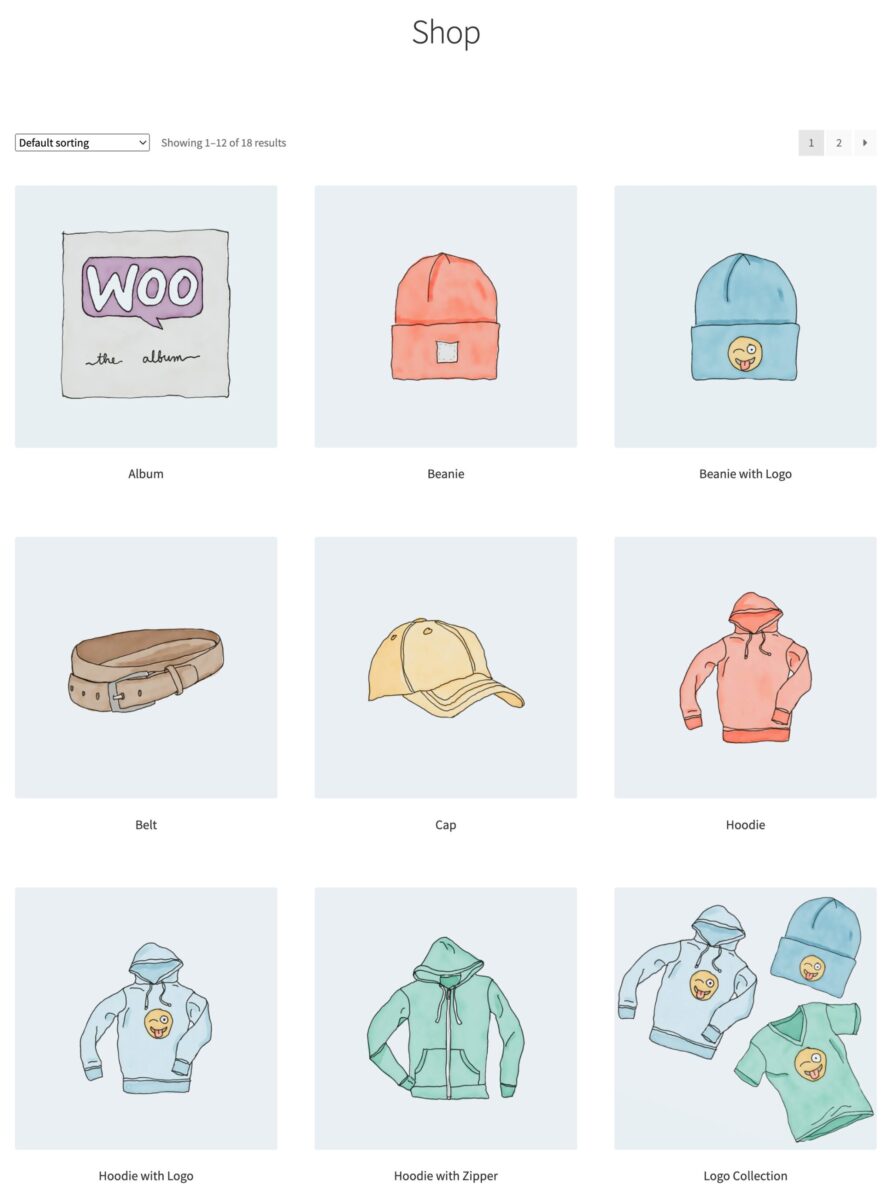
Replace ‘add to cart’ button with alternative
If you would like to allow users to enquire about products in the catalog, you can replace the standard ‘add to cart’ button with an alternative. You can choose the wording for the button and where it should direct the user:
- Go to Members Only > Settings
- Enter alternative wording in the ‘Add to Cart Text’ field, e.g. ‘Make Enquiry’
- Enable the ‘Redirect from Add to Cart Button’ option – this will redirect the user to a landing page if they click the alternative add to cart button. You can specify the landing page in the ‘Landing Page’ setting in your plan

Now the add to cart buttons will be replaced with an alternative button.

Prevent users from accessing product pages
Members Only is flexible enough that you can prevent users from accessing product pages themselves if you like. Just disable the ‘Access Product Pages’ option in the settings page.
Method #2: Enable catalog mode for specific users
There are several options if you’d like to disable catalog mode for some users – so that some users will be able to use your site as a fully functioning ecommerce store but others will experience it as a catalog.
Catalog mode by user or user role
You can define which users or user roles can access the full site:
- Follow the steps in Method #1 above to enable catalog mode
- Go to Members Only > Plans and edit the plan you created
- In the ‘User Roles’ section, enter the user roles who catalog mode should be disabled for
- You can also enter specific user IDs in the ‘Permitted Customers’ field if required

In the example settings above, all users will experience your site as a catalog but customers with the ‘Gold’ user role will experience the full ecommerce functionality.
Catalog mode for guest users only
If you like, you can enable catalog mode only for guest users; any user who logs in will be able to access the full ecommerce version.
To enable catalog mode for guest users:
- Go to Members Only > Settings
- Set ‘Restriction Method’ to ‘Log-in status’

Now, only registered users who have logged in will access the full ecommerce version of the site. Guest users who are not logged in will see the catalog mode version.
Catalog mode for users by password
If you like, you can enable catalog mode only for users who do not have a specific password; any user who has a password will be able to access the full ecommerce version.
To enable catalog mode for guest users:
- Go to Members Only > Settings
- Set ‘Restriction Method’ to ‘Password’

Then:
- Edit the plan that you created and enter one or more passwords into the ‘Passwords’ field

Now, only users who have entered a correct password will access the full ecommerce version of the site. Guest users who have not entered a correct password will see the catalog mode version.
Method #4: Catalog mode for specific product categories
If you’d like to enable catalog mode for certain product categories and not your entire store:
- Edit the plan you created
- Remove ‘Post Types’ from ‘Content Type’ and replace it with ‘Product Categories’
- Choose which product categories you want to enable catalog mode for in the ‘Restricted Product Categories’ setting
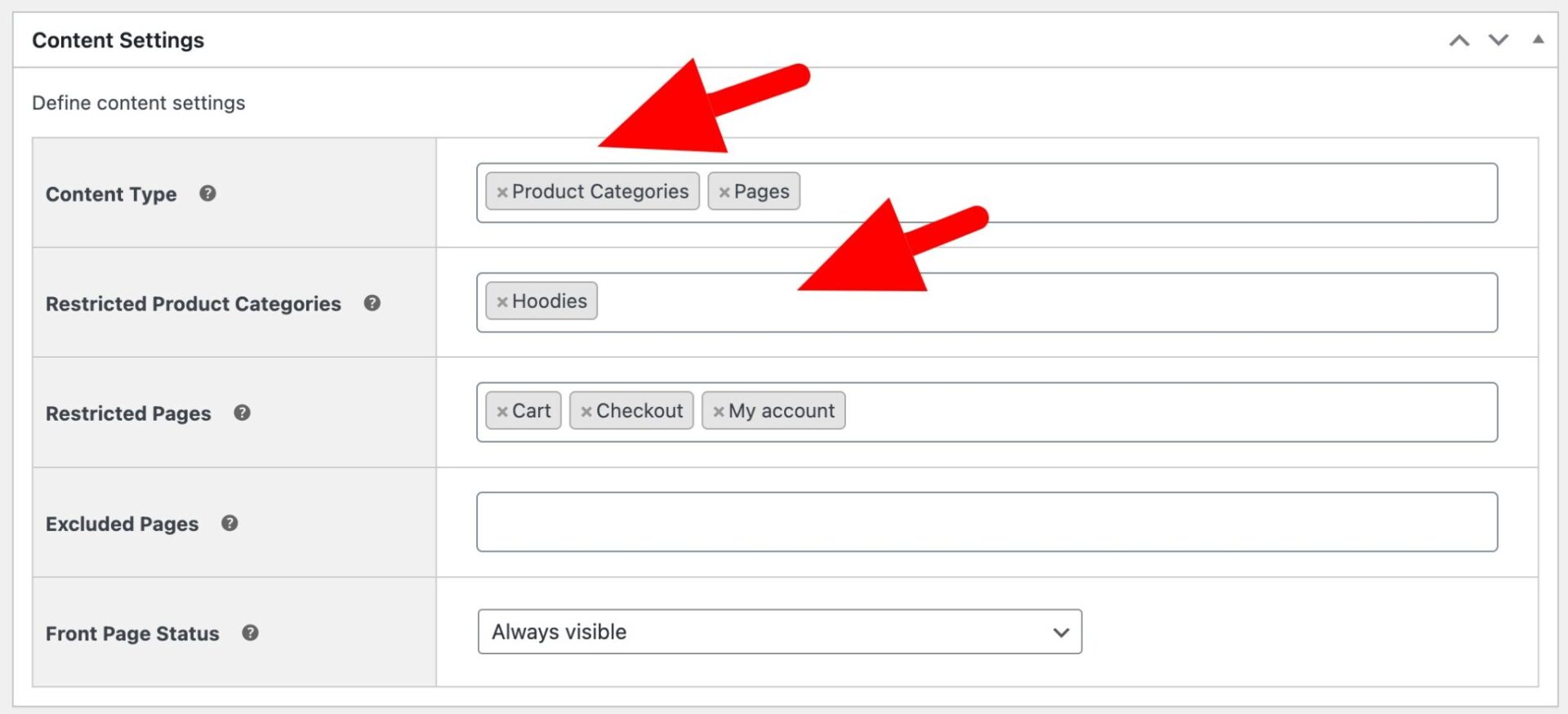
Now, only products in those categories will have catalog mode enabled.
Method #5: WooCommerce catalog mode for wholesale and B2B
So far, we’ve looked at simple ways to enable catalog mode in WooCommerce using the Members Only plugin. This might be especially useful for sites running wholesale or B2B stores: for instance, you might want to display a product catalog to guest users but display a full ecommerce site to your customers.
The Members Only plugin is also part of our WooCommerce Wholesale and B2B Plugin Bundle, which allows you to create a fully featured wholesale store. Using this bundle, not only can you display a catalog to guest users, you can also display different price levels to different customers. So you could display a catalog to users who are not logged in, then an ecommerce store with one set of prices to your retail customers, and another set of prices to your wholesale customers.
WooCommerce Wholesale & B2B Plugin Bundle
Create a wholesale or B2B store in WooCommerce
Catalog mode video
Here’s a video that covers the methods above.
Method #5: Allow users to request quotes from your catalog
Our final example uses a different plugin entirely. The WooCommerce Request a Quote plugin allows you to turn your store into a catalog which users can browse then apply to you for a price on any products they’re interested in.
Let’s look at how to use the Request a Quote plugin to enable catalog mode on your site.
Enable catalog mode with the Request a Quote plugin
To configure Request a Quote so that it converts your site into a catalog:
- Go to WooCommerce > Settings > Request a Quote
- Update the ‘Enable Quotes on’ field to ‘All Products’
- Enable the ‘Hide prices on quotable items’ field
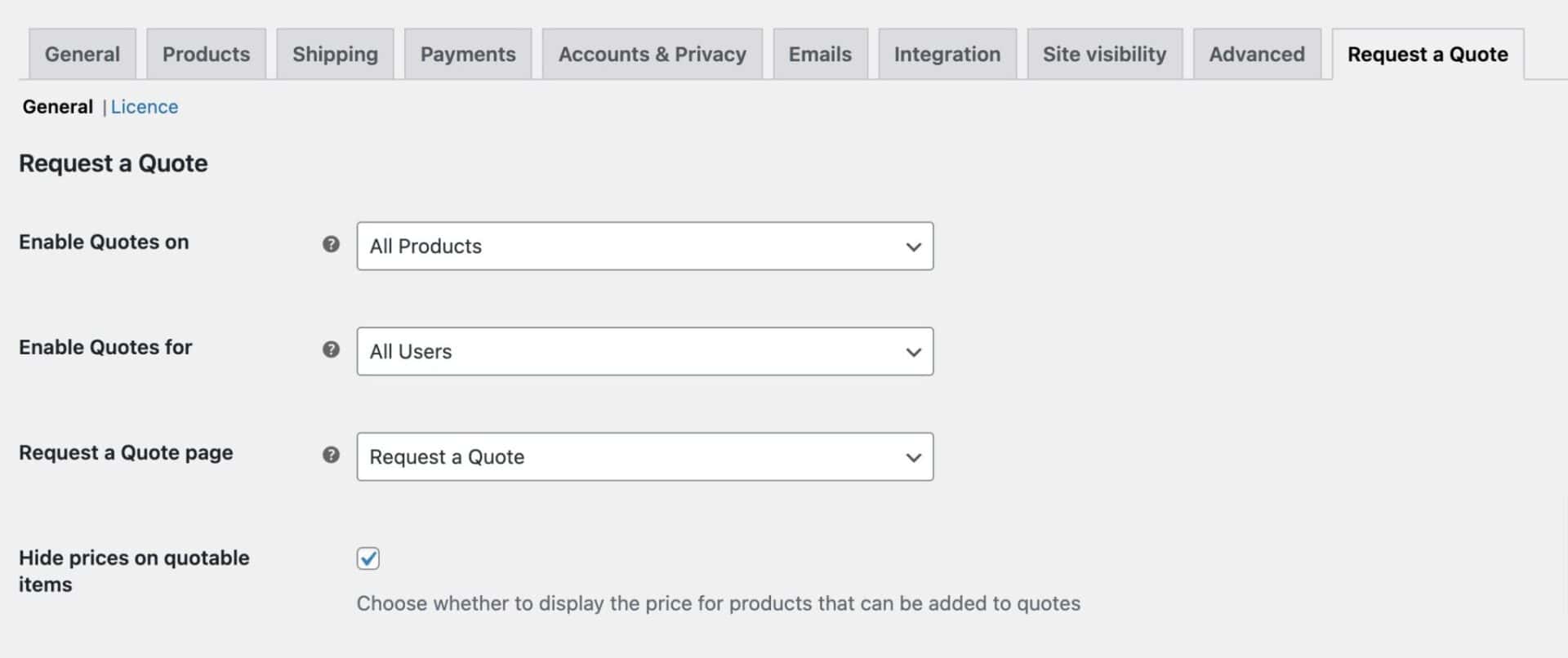
Your site will now function as a catalog: prices are hidden on each product and, instead, the user can click a ‘Add to Quote’ button.

When the user adds a product to their quote, it is added to a quote form that they can submit to you.
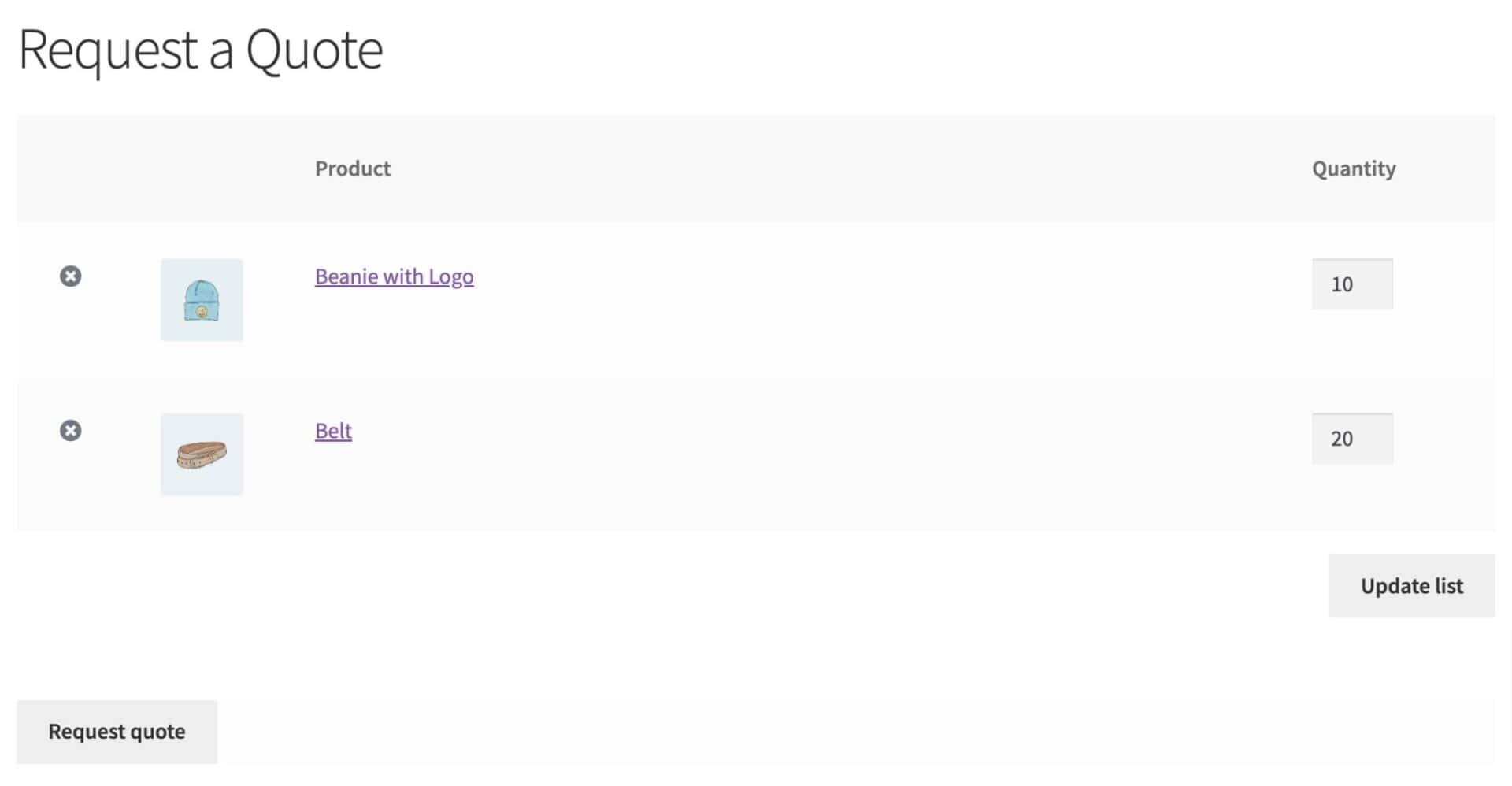
Specify which products appear in the catalog
If you would prefer to enable catalog mode for some products, but not all:
- Go to WooCommerce > Settings > Request a Quote
- Update the ‘Enable Quotes on’ field. Choose from:
- All products: to hide prices on all products
- Specific products: hide prices on the products that you specify
- Specific categories: hide prices on all products in the categories that you select
- Specific tags: hide prices on all products with the tags you specify
- Enable the ‘Hide prices on quotable items’ field
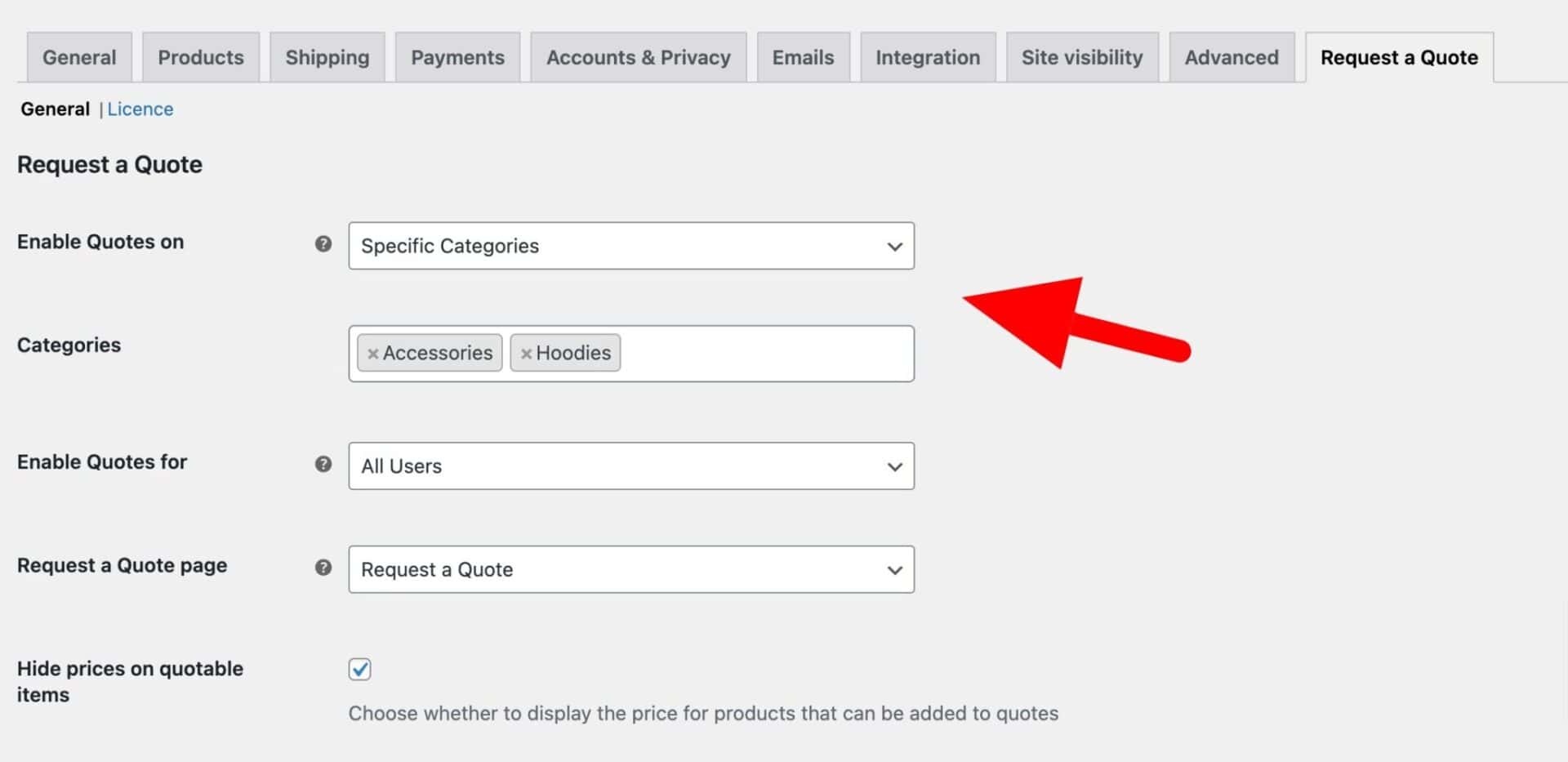
That’s how to enable catalog mode using the WooCommerce Request a Quote plugin.
WooCommerce catalog mode – recap
In this article, we looked at what catalog mode is and why you might want to use it. We also looked at several plugin options for the following functionality:
- Catalog mode for all users WooCommerce
- Catalog mode for certain user roles
- Catalog mode for specific product categories
- Using catalog mode in your wholesale or B2B store
- How to allow users to request a quote from your catalog
The plugins featured in this article are:
WooCommerce Members Only: a complete membership solution that allows you to enable catalog mode with just a few clicks. It gives you flexibility over how to apply catalog mode to users and products.
WooCommerce Wholesale and B2B Plugin Bundle: a wholesale store solution that includes Members Only plus additional plugins for discounting and creating alternative layouts.
WooCommerce Request a Quote: turn your site into a catalog where users can enquire for quotes.
All our plugins are backed by a 14-day money-back guarantee so whichever solution you choose, you can try it risk-free. And we have a world-class support team that can assist you with any questions or guidance.

